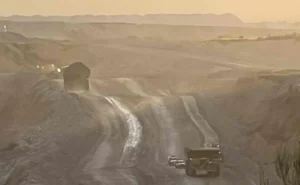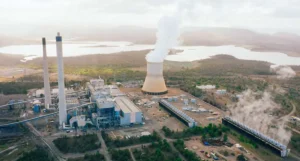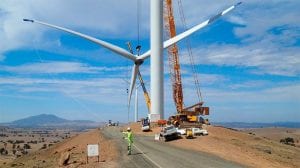More grid-aches plagued Australia’s National Electricity Market over the weekend – none of them anything to do with renewables – as extreme weather flattened power lines in Queensland, faults in the poles and wires caused blackouts in Victoria, and ageing Latrobe Valley coal power generators proved once again that they cannot be relied upon.
In Queensland, the state with barely a wind farm to be seen, extreme winds and extraordinary storms with “upwards lightening” and “tennis ball-sized hail stones” flattened down power lines across the state and left around 55,000 without power.
In Victoria, meanwhile, a substation fault, this time in Boronia, cut power to more than 20,000 homes in Melbourne’s south-east just before midnight on Sunday; while a few hours before that, more than 400MW of coal-fired capacity went AWOL due to “coal supply reliability issues.”
It could have been worse:
Last night Victoria lost 1400 MW across 2 coal power stations for 6 hours due to “coal supply reliability issues”. #gasandcoalwatch pic.twitter.com/hU4fBBuiwH
— Australia Institute (@TheAusInstitute) February 11, 2018
The network fault related outages in Victoria came just a couple of hours after the state government announced that thousands of Victorians would get an “unprecedented” one-off payment in compensation for late the January blackouts that left tens of thousands of households without power during a heatwave.
As reported by RE at the time, the January 28 blackouts were caused by faults in the delivery of electricity and not the supply or generation of it, renewable or otherwise – a disappointing twist for anti-renewable campaigners in both media and politics who had been rooting for a summer black out, to boost their cause.
Rather, as absolutely everyone in the state turned their air conditioners up to 11 to cope with temperatures hovering around 40°C – and an overnight low of around 30°C – the state’s “poles and wires” (mostly substation fuses) systems were overwhelmed by demand that peaked at around 9,144MW: “the highest operational demand for a Sunday, ever,” says AEMO.
Of course, this led to different conversations about grid reliability – and the price consumers are paying for it. Now the networks are paying too.
According to the Western Advocate, Victorians who lost power for between three and 20 hours would get $80 in compensation, while those affected for more than 20 hours would get up to $180. About 50,000 people were expected to receive the payments by the end of February.
Meanwhile, on Sunday night, the substation fault wasn’t the only thing going wrong in Victoria.
At around 8pm, AEMO warned the market of a reduction of supply of a possible 1400MW of coal-fired power in the state, due “coal supply reliability issues” at two different power stations, AGL Energy’s Loy Yang A and Alinta Energy’s Loy Yang B, in the Latrobe Valley.
As Paul McArdle from WattClarity has noted, available generation was, in the end, only reduced by 420MW across all 6 units, while 960MW of additional capacity was still offered to the market,
but at a higher price.
“Given the price offered (>$300/MWh), it was unlikely this would be called on overnight, so the AEMO dispatched the output of the 6 units in aggregate down by that combined amount (i.e. 1,380MW). Important to note that whatever repair work was required was completed overnight, as AEMO had indicated, and the units are all back up around full load.”
And as The Australia Institute has pointed out, the combination of milder weather in Victoria on Sunday, and the fact that it was a weekend evening, meant the impact of this sudden lack of supply was minimal.
And luckily it was a weekend evening, but if its happens during a heatwave day when peak demand is an issue, solar will reduce underlying demand and help a lot. We need more solar, incl solar dispatchable thermal with storage plus PHES to replace these things.
— Australia Institute (@TheAusInstitute) February 11, 2018
But it does offer another well-timed reminder that the coal-fired power generators that the federal government wants us to fall back on in the quest for reliable supply, are not really all that reliable.
Meanwhile, in Queensland, the extent to which our grids are at the mercy of extreme weather – extremes that are only becoming more frequent as global warming worsens – was writ large, after severe storms left 135,000 south-east homes in darkness on Sunday night.
ABC News Online reports that at the height of the storm on Sunday night, more than 500 power lines were brought down in high winds and 265,000 lightning strikes were recorded.
Not much you can do about power lines being “ripped down” by wind and struck by lightening, but it does help to make the case for more distributed solar and storage in our cities.
As Brisbane and other parts of Queensland head for highs between 35°C and 41°C on Monday, the ABC reports that two schools have closed their doors to students due to the power loss, while a number of train services had been cancelled due to failing radio communications.
Energex said crews had worked through the night, but some homes and businesses might not have power restored until Tuesday afternoon. More than 55,00 homes and businesses were still without power on Monday morning, around 40,0000 of those in Logan City, in Brisbane’s south east.











